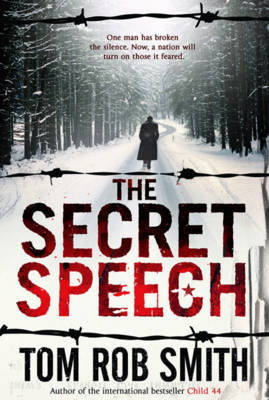Veteran journalists Dan Raviv and Yossi Melman have authored a compelling new book, Spies Against Armageddon: Inside Israel’s Secret Wars, that should become required reading for President Barack Obama and his National Security Council.
The White House has abandoned “nation-building” and opted for a “small footprint” strategy of special operations missions and drone attacks in the Middle East. If this is the direction for American foreign policy in the region (at least for the short-term), there’s a lot to be learned from the Israeli experience and Spies Against Armageddon offers a deeply researched account of how Mossad and other Israeli intelligence agencies operate when confronting threats to the Jewish state.
Take, for example, the sensitive topic of state-sponsored assassination (covered in detail in Chapter 22 of Spies Against Armageddon). It is a practice frowned upon by the international law community (which considers assassinations of suspected terrorists to be “extrajudicial killings”), but one that has been employed by the Mossad in its fight against terrorism.
Historically American political leaders have been queasy about endorsing assassinations and confronting the difficult legal and moral questions they raise, especially when the targets are far from armed conflict zones. After the revelation of CIA involvement in assassination plots in Cuba, Vietnam, the Congo and elsewhere, President Gerald Ford signed an executive order banning assassinations in 1976. In the aftermath of 9/11, the Bush Administration relaxed prohibitions against “targeted killings” arguing that they were a form of self-defense*. Predator drones began firing Hellfire missiles at Al Qaeda and Taliban militants in Afghanistan and Pakistan. President Obama has dramatically expanded these drone strikes, making them the central tactic in American counterterrorism efforts.
In fact, Obama’s enthusiasm for, and acceleration of, “drone wars” has disturbed many of his liberal supporters. The revelation that Obama himself reviews the “kill list” of targeted terrorists, and decides their fate, has been an unsettling image for many. In his Esquire piece “The Lethal Presidency of Barack Obama,” Tom Junod directly challenges the President’s current direction: “You are the first president to make the killing of targeted individuals the focus of our military operations, of our intelligence, of our national-security strategy, and, some argue, of our foreign policy.” Junod adds: “Since taking office, you have killed thousands of people identified as terrorists or militants outside the theater of Afghanistan. You have captured and detained one.”
In contrast, Spies of Armageddon argues that the Israelis take a more restrained approach to targeted killing. They prefer the scalpel to the hammer. Raviv and Melman note that:
- The Israelis are very selective in their use of assassination as a foreign policy tool, despite the public perception (aided by movies like Munich) that they rely on hit squads. Raviv and Melman claim that since the creation of Mossad in the early 1950s “it has been involved in only a few dozen killing operations—certainly fewer than 50.”
- Their targets tend to be key operational players in terrorist groups like Hamas and Hezbollah, or technical support people (bomb-makers, nuclear scientists). Spies Against Armageddon made headlines around the world in reporting that it was Mossad agents, not Iranian rebel groups, responsible for the killings of Iranian nuclear scientists.
- They don’t go after top political figures.
- They won’t, and don’t, kill Israeli citizens.
In contrast to this selectivity, the drone programs operated by the U.S. military and the CIA have been aimed at thousands of militants in an increasing number of countries. Drones have been employed in Afghanistan, Pakistan, Iraq, Yemen, Libya, and Somalia. And most disturbingly, President Obama and his surrogates have claimed the authority to kill American citizens deemed to be terrorists without judicial review or due process. Attorney General Eric Holder has argued that administrative due process is enough—a bizarre position for the nation’s top legal official to take.
It’s not hard to see why the Obama Administration has turned to drones to counter Islamic jihadism. It avoids the costly, and unpopular, use of American combat troops in the Middle East. It does keep Al Qaeda and the Taliban off balance. And it does protect Obama politically from right-wing attacks that he is soft on terrorism.
Yet it doesn’t appear that policy makers have thought through the practical, legal, and moral issues surrounding their reliance on targeted killing. The Obama Administration’s position on targeting American nationals without judicial oversight is a terrible one, arrogating to the President the “power of kings” to unilaterally kill his subjects. There’s also the question of how long this approach can be sustained. Boston University’s Andrew Bacevich, for one, has questioned this continuing “whack-a-mole” approach: “How many Hellfire missiles do we launch from drones before the last violent Islamic radical is either dead or decides that the cause is futile and puts down his arms and goes home?”
These aren’t easy issues to address. Spies Against Armageddon makes it clear that within the Israeli government there is a continuing debate over the limits of action and the ethical boundaries for intelligence agencies in a democratic state. It’s heartening to know that such debates are taking place in Jerusalem. We can only hope that they are happening in Washington as well.
*Lethal force may be employed in self-defense under Article 51 of the UN Charter.
Copyright © 2012 Jefferson Flanders
All rights reserved

